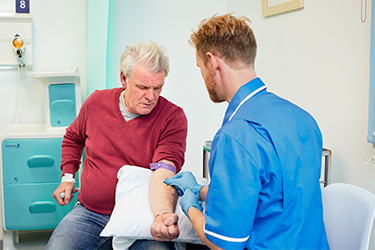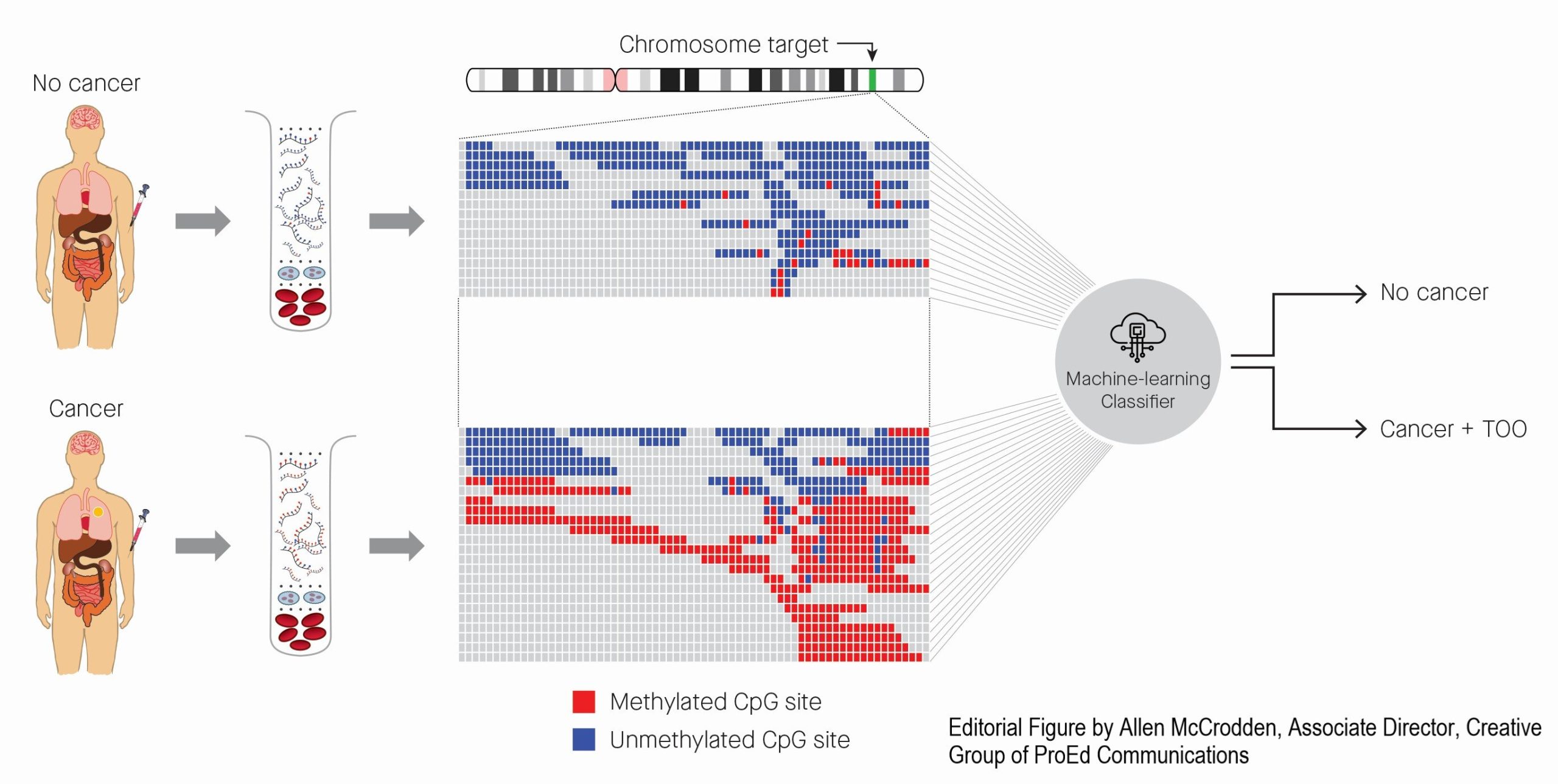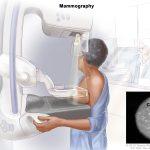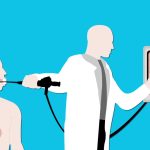Blood tests can:
- check your general health, including how well your liver and kidneys are working
- check numbers of blood cells
- help diagnose cancer and other conditions
Your blood sample is sent to the laboratory for analysis. This shows the different types of cells, chemicals and proteins in the blood.
Preparing for your blood tests
You can eat and drink normally before most blood tests. For fasting blood tests you need to stop eating and drinking beforehand. Your doctor will tell you for how long.
What happens?
You sit or lie down to have the test.
A doctor, nurse or phlebotomist (person specialised in taking blood) chooses the best vein to use. This is usually from your arm or hand. Let them know if you are afraid of needles, get unwell with the sight of blood or are allergic to plasters or latex.
They put a tight band (tourniquet) around your arm above the area where they take the sample. You may need to clench your fist to make it easier to find a vein.
They clean your skin and then put a small needle into your vein. Next, they attach a small bottle or syringe to the needle to draw out some blood. They might fill several small bottles.
Once they have all the samples, they release the band around your arm. They then take the needle out and put pressure on the area with a cotton wool ball or small piece of gauze for a few minutes. This helps to stop bleeding and bruising.
Look away when they’re taking the blood if you prefer. Tell your doctor, nurse or phlebotomist if you feel unwell.

Types of blood tests
Full blood count
A full blood count (FBC) measures the number of red cells, white cells and platelets in your blood.
- Red cells carry oxygen around our bodies. Haemoglobin is the part of the cell that carries oxygen. If you have a low red cell count, your doctor might say you’re anaemic (pronounced a-nee-mic). This can make you feel tired, short of breath and dizzy.
- White cells fight infections. There are several different types of white cells, including neutrophils and lymphocytes.
- Platelets help clot the blood, for example after a cut. Symptoms of a low platelet count include abnormal bleeding, such as bleeding gums and nosebleeds.
There is a range of normal for blood counts. The range of figures quoted as normal varies slightly between laboratories and also differs between men and women.
Urea and electrolytes
These blood tests show how well your kidneys are working. Waste chemicals called urea and creatinine are produced by the body. Our kidneys remove them from our blood and get rid of them in our urine.
Electrolytes are substances such as sodium, potassium, chloride and bicarbonate.
Liver function tests (LFTs)
Liver function tests (LFTs) check how well your liver is working. LFTs look for levels of enzymes and proteins made by the liver or which are cleared by the liver. They include:
- alanine aminotransferase (ALT)
- aspartate aminotransferase (AST)
- alkaline phosphatase (ALP)
- gamma-glutamyl transferase (Gamma GT)
They might be raised if you have a blockage in your liver or bile duct, or if you drink a lot of alcohol.
LFTs also look at the amount of bilirubin in the blood. This is a chemical in bile  . Bilirubin can be raised if you have a problem with your liver or gallbladder. Bilirubin can cause yellowing of your skin and eyes (jaundice).
. Bilirubin can be raised if you have a problem with your liver or gallbladder. Bilirubin can cause yellowing of your skin and eyes (jaundice).
LFTs also measure albumin. This is a protein in the blood that can be low when you have some types of cancer. You can also have low albumin if you’ve been eating small amounts and are malnourished.
Tumour marker blood tests
Tumour markers are substances that might be raised if there is a cancer. They’re usually proteins. They can be found in the blood, urine or body tissues. You might also hear them called biomarkers or molecular markers.
Doctors might use tumour marker tests together with the results of other tests you have to:
- help diagnose a cancer
- help plan treatment
- monitor how well your cancer treatment is working
- check if the cancer has come back
Some tumour markers are only made by one type of cancer. Others can be made by several types. Some tumour markers are found in non cancerous conditions as well as cancer. And some cancers don’t have any tumour markers.
For those cancers that may have raised tumour markers, you can find out more in the tests section for that cancer type.
Other blood tests
Depending on your cancer type, you might have other blood tests. For example to check for viruses, hormone levels and changes to genes. Your doctor or nurse will talk to you about the different blood tests you will have. You can read more about the blood tests you need in the tests section for your cancer type.
Possible risks of having a blood test
Blood sampling (phlebotomy) is a safe test. There is a possibility of:
- bleeding and bruising – pressing hard when the needle is removed can help to stop it
- pain – this is normally mild and can last for a few minutes
- swelling (oedema) – ask your nurse, doctor or phlebotomist to avoid an arm that is swollen or has a risk of swelling
- feeling faint or fainting – tell the person doing your blood test if you’re feeling lightheaded or dizzy at any time
- infection – this is very rare
Getting your results
Ask the phlebotomist, doctor or nurse when and how you will get your results. Some results might be available very quickly, such as a full blood count and kidney and liver function tests. Other tests might take several weeks.





